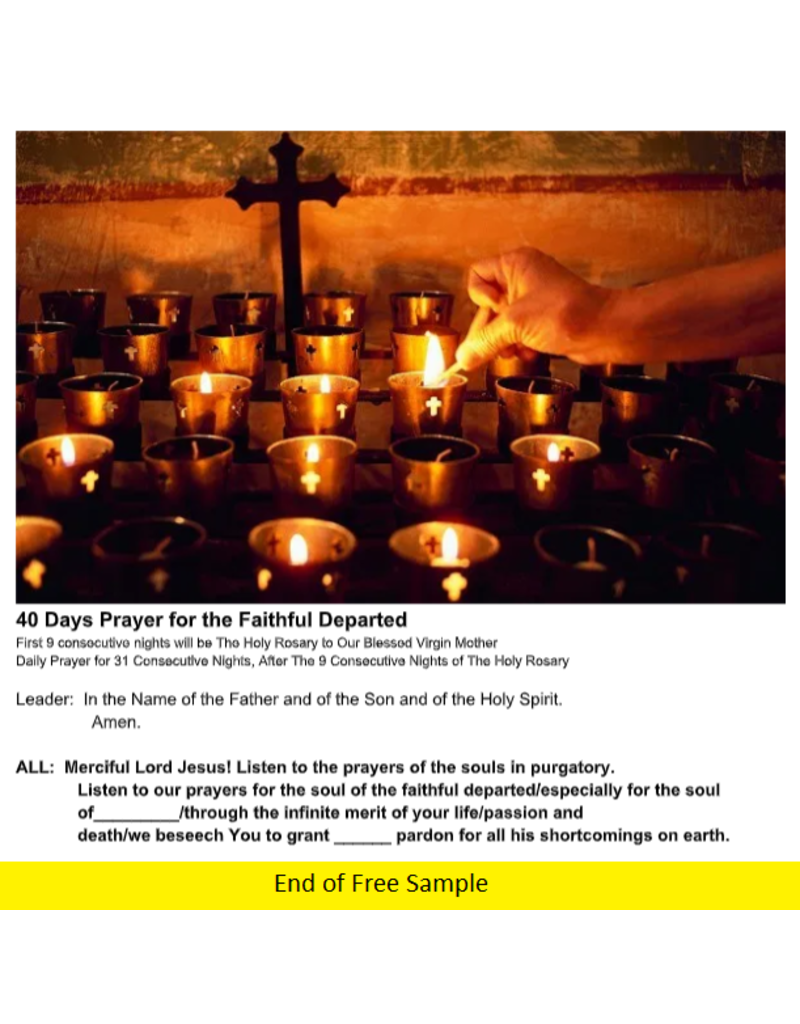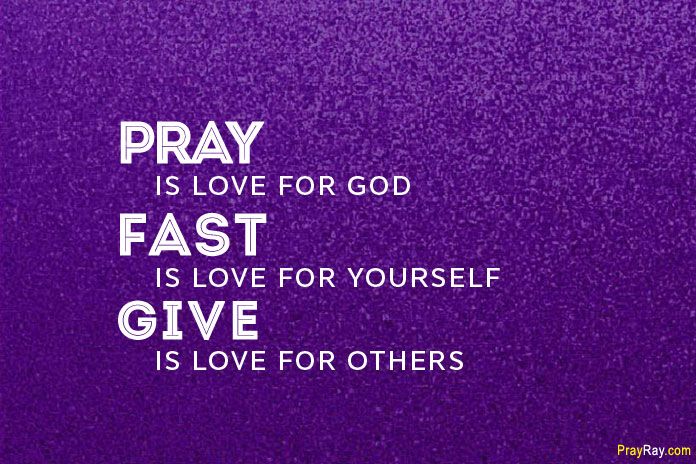The 40th Day after death is a traditional memorial service, family gathering, ceremonies and rituals in memory of the departed on the 40th day after his/her death.The 40th Day concludes the 40-day memorial period and has a major significance in traditions of Eastern Orthodox and Ukrainian Greek Catholic Church.[1] It is believed that the soul of the departed remains wandering on Earth during the 40-day period,coming back home, visiting places the departed has lived in as well as their fresh grave. The soul also completes the journey through the Aerial toll house finally leaving this world.
Dec 1, 2019 - Explore Carla Tamondong's board 'Prayers' on Pinterest. See more ideas about prayers, novena prayers, prayer for the dead.

In Russian tradition, bread and a glass of water is put in the Icon Corner in the house of the departed. The bread and water are intended for the departed and other deceased ancestors who will visit to remember him. The glass is refilled with fresh water daily while water from previous day is poured out. It is common to make up the bed for the departed during the 40-day period, donating the bedding to poor on the 40th Day. A towel for the departed is hung next to the window and brought to the church on the 40th Day. The house doors are adorned with spruce branches for the departed to easily find his house and for the passersby to give theirrespects. On the 40th Day the branches are brought to the cemetery or burned. All remaining ritual items in memory of the departed are removed from the house, his cloth is donated to the poor or burned. All ceremonial restrictions are also lifted on the 40th Day, it is no longer prohibited to lay on the departed bed, to leave the house empty and locked, to turn off the light in the departed room, to touch the departed cloth, etc. It is also no longer prohibited to decorate the departed grave.
40 Days Prayer for the Faithful Departed First 9 consecutive nights will be The Holy Rosary to Our Blessed Virgin Mother Daily Prayer for 31 Consecutive Nights After The 9 Consecutive Nights of The Holy Rosary. Read several inspiring prayers to help receive God’s strength, with a prayer for strength for a friend going through a difficult time and an uplifting prayer for hope and courage. Be encouraged as.


The family gathers on the 40th Day inviting those who wish to remember the departed visiting the grave and the church and having a memorial meal at the house. The church serves the 40th Day panihida with prayerscomforting the living and reminding the living of the brevity of life. The meal at the house includes traditional dishes of remembrance: kutia, kissels, honey drinks. In some traditions all night vigils with intense prayers are held on the night before the 40th Day. The Motive of the 40th Day is 'we said good bye to you, no longer come to us, we will come to you.' After the 40th Day the living can no longer grieve about the departed, they must move on with their lives. All funeral wreaths are removed from the grave and burned.
40th Day tradition, with the Ascension of Jesus occurring on the 40th Day after his resurrection when Jesus' humanity is taken into Heaven.
See also[edit]
- Arbaʽeen Commemoration the 40th day after the martyrdom of Husayn ibn Ali (Shia Islam)
- ja:四十九日 (gathering of family and relatives of, and praying for a person in Japan, 49 days after the person dies)
References[edit]
- ^http://www.encyclopediaofukraine.com/display.asp?linkpath=pages%5CH%5CI%5CHistoryoftheUkrainianchurch.htm
The faithful on earth can assist these souls in purgatory in attaining the beatific vision through their prayers, good works and the offering of Mass.

In the early days of the Church, the names of the faithful departed were posted in Church so that the community would remember them in prayer. In the sixth century, the Benedictine monasteries held a solemn commemoration of deceased members at Whitsuntide, the days following Pentecost. In Spain, St. Isidore (d. 636) attested to a celebration on the Saturday before Sexagesima Sunday (the second Sunday before Lent, the eighth before Easter, in the old calendar). In Germany, Widukind, Abbot of Corvey (d. 980) recorded a special ceremony for the faithful departed on Oct. 1. St. Odilo, the Abbot of Cluny (d. 1048), decreed for all of the Cluniac monasteries that special prayers be offered and the Office of the Dead sung for all of the souls in purgatory on Nov. 2, the day after All Saints. The Benedictines and Carthusians adopted that same devotion, and soon Nov. 2 was adopted as the Feast of All Souls for the whole Church.
Other customs have arisen over time in the celebration of All Souls Day. The Dominicans in the 15th century instituted a custom of each priest offering three Masses on the Feast of All Souls. Pope Benedict XIV in 1748 approved this practice, and it rapidly spread throughout Spain, Portugal and Latin America. During World War I, Pope Benedict XV, recognizing the number of war dead and the numerous Masses that could not be fulfilled because of destroyed Churches, granted all priests the privilege of offering three Masses on All Souls Day: one for the particular intention, one for all of the faithful departed and one for the intentions of the Holy Father.
Other customs have developed regarding All Souls. In Mexico, relatives make garlands, wreathes and crosses of real and paper flowers of every color to place on the graves of deceased relatives the morning of All Souls. The family will spend the entire day at the cemetery. The pastor will visit the cemetery, preach and offer prayers for the dead, and then bless the individual graves. “Skeleton” candy is given to the children.
Similar practices occur in Louisiana. The relatives whitewash and clean the tombstones, and prepare garlands, wreathes and crosses of real and paper flowers to decorate them. In the afternoon of All Saints, the priest processes around the cemetery, blessing the graves and reciting the rosary. Candles are lit near the graves at dusk, one for each deceased member. On All Souls day, Mass is usually offered at the cemetery.
In the Middle Ages, superstitious belief, probably influenced from Celtic paganism, held that the souls in purgatory appeared on All Souls Day as witches, toads, goblins, etc., to persons who committed wrongs against them during their lives on earth. For this reason, some ethnic groups also prepared food offerings to feed and to appease the spirits on this day. These practices are probably remnants of the Celtic Samhain festivities.
40 Days Prayer For The Faithful Departed Free Download
Nevertheless, All Souls Day as well as all Saints Day are rooted in Christian belief and arose in this life of the Church through a healthy spirituality, despite some pagan trappings that may have survived and have remained attached to their celebration.